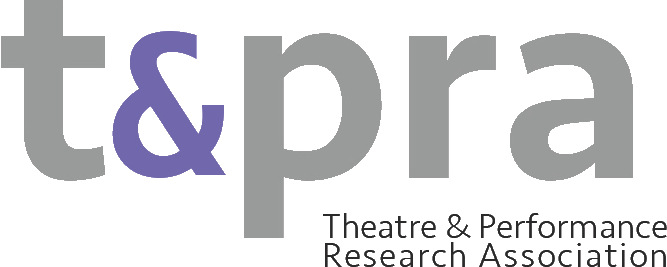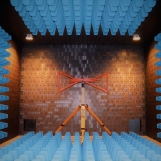TaPRA 2025 Sound, Voice and Music CFP
Deadline: Monday 10 March 2025
27-29 August 2025, University of Warwick
Theme: Interfaces
In 2024, discussions in the SVM working group revolved around resistance, reflection and regrouping, opening new pathways of thought about musicality and vocal expression in such contexts as politics, care and activism. This year, we encourage colleagues to think about sound, voice and music as interfaces, dynamic contexts for interaction, which enable new connections, border crossing, and foster collaboration.
In the age of the digital, we connect the idea of the interface primarily with technological design and innovation – areas in which music, sound and voice research has pioneered over the past decade. Specifically relevant are the ways in which human-computer interaction, through musical and voice interfaces, as well as audio and sound interfaces, has been developed to serve the practical needs of users and creators alike. The development of accessible digital instruments (ADMI’s), underpinned in recent years by advances in haptics, motion technologies, and virtual environments, has also greatly expanded the scope for sonic creativity and inclusive performance.
However, while such technologies are rapidly expanding creative human-machine interactive capacities, the coming into contact of other material bodies (objects, organic and inorganic matter, acoustic instruments), the meeting of sensory media, and the margins of exchange between bodies, environments, and materials, also represent distinct sites of interfacing. As Melody Jue argues in Wild Blue Media: Thinking Through Seawater, when considered in relation to depth in sites such as the ocean and other areas of significant atmospheric pressure, the idea of interface can be considered a “distributed and volumetric phenomenon rather than solely a matter of surface” (2020, p.21).
Furthermore, drawing on David Rokeby’s understanding of interfaces “as a kind of belief system, carrying and reinforcing our assumptions about the way things are” (1998, np) and as a “mirror [which] not only reflects back, but also refracts what it is given” (1995, np), we invite reflections, analyses, and provocations on the way interfaces of numerous kinds organise perception, artistic practice and relations with human and non-human others.
Applying Lev Manovich’s concept of the “cultural interface” specifically to musicality, we initiate conversations on how practices and artworks in music, sound and voice become, from “cultural objects”, important mediators and agents of our cultural heritage (2001, p.70). In this respect, we propose an approach to sonic interfaces both as tools which allow practitioners to intervene in their environment, as well as vectors of relations which make certain exchanges possible and prevent others from happening.
In our topic invitation, we ask how we can extend our understanding of interfaces from the digital to the natural across a continuum which spans digital, analogue, human and more than human assemblages? How can we ground the most recent developments in interactive music, sound and voice technology within a holistic and multimodal understanding of complex embodied, intersubjective, material and interspecies relations? In particular, we are interested in how instruments, musical tools, events or practices could become interfaces strengthening human communication or collective action.
Submissions are invited on, but not limited to, the following topics:
- Sound, voice and music (SVM) as interfaces: how do we (learn to) interact through sound, voice and music and what modes of interaction do different sonic, aural/vocal and musical arrangements make possible?
- Embodied interfaces, the body as interface in SVM: in what way interfaces may inaugurate new sensory/bodily arrangements and what do these arrangements reveal about our understanding of embodied subjectivity?
- SVM Interfaces for/as self-expression: what kind of creative practices do interfaces make possible and how do these practices become acculturated and popularised?
- SVM interfaces and participation: In what ways do interfaces of different kinds enable participation and access to creative expressions? In which contexts, with whom, why and how?
- SVM interfaces in/as education and training methodology: How can different types of musical interfaces become useful tools in education, training and teaching methodology?
- Objects, scores, and documentary interfaces: What is the function of mediatory objects and archives in sonic, vocal and musical performance?
- Musical interfaces and culture: In what kind of contexts do interfaces develop and towards what kind of intended use? Can interfaces facilitate acts of care, emplacement, and dialogue, or a sense of belonging?
- Sonic interface in/as resistance – How do interfaces manifest as sites of conflict, abrasion, boundary, and barrier?
In response to the above areas, we invite proposals from researchers and practitioners across disciplines (for example, theatre and performance studies, musicology, music technology, sound studies and sound art, interaction/interface design, performance and dance).
Possible forms/formats include:
- paper presentations formal papers (up to 20 minutes)
- provocations or position statements (up to 10 minutes)
- practice research (up to 20 minutes)
- videographic or audiovisual presentation (up to 15 minutes)
References:
Jue, M. (2020). Wild blue media: Thinking through seawater. Duke University Press books.
Manovich, L. (2001). The Language of New Media. The Massachusetts Institute of Technology Press.
Rokeby, D., (1995). Transforming mirrors. Leonardo Electronic Almanac, 3(4), p.12.
_________,(1998). The Construction of Experience: Interface as Content. Digital Illusion: Entertaining the Future with High Technology/ACM press, Addison-Wesley Publishing Co.
Optional information about any joint panels in collaboration with other working groups:
You are welcome to make a proposal for an optional (online, in-person, hybrid) social or workshop activity for WG members and for collaborative panels, which you would organize or contribute to, lasting between 30-90 minutes. One or more of these activities might take place during the conference.
Submit your abstract here by 10 March 2025
How the TaPRA conference works:
Our conference has two types of sessions: whole group sessions for all delegates and parallel panels of papers, performances, and interventions streamed by “working group”. The working groups focus on specific research interests and disciplines and set their own themes for each conference. This is detailed in CFPs like this one. There is also an opportunity to exhibit practice research in a gallery.
A complete list of our 13 working groups is available here on the TaPRA website. Most delegates choose a working group that aligns with their interests and use this group as their base for the conference, attending most or all of their slots as the working groups meet multiple times. These sessions host presentations from long-standing members and new colleagues. However, you can attend sessions hosted by any other working group throughout the conference. The programme also includes open panels where attendees are encouraged to visit working groups sessions other than their own.
To speak, present, or perform TaPRA, you will need to identify your preferred working group and submit a proposal that speaks to their theme. You apply to one working group. You can also indicate that you are willing for your paper to be considered by other working groups.
Conference environment:
In addition to whole group sessions, working groups, and open panels. the Practice Gallery and publisher stalls are open for most of the conference, and there are more social events at various moments including the conference dinner.
Access:
The 2025 annual TaPRA conference at the University of Warwick will be a hybrid event, facilitating participation by online delegates alongside those attending in-person. Since our 2021 conference we have been able to experience benefits of online conferencing, such as increased opportunity for international presenters, lower financial costs to participate, and greater accessibility for those with caring responsibilities. The 2025 conference at Warwick aims to retain the wider opportunities for engagement that online platforms offer, whilst also maintaining a space for in-person engagement and social interaction.
Key dates:
- Applicants will receive decisions on their proposals on 11 April 2025
- Conference registration opens 12 May 2025
- Early bird registration closes on 30 June 2025
- Presenter registration deadline is 18 July 2025
- General registration closes 12 August 2025
Bursaries:
Each working group has one bursary available for postgraduate and early career researchers. The bursary includes free conference registration and £300 towards conference travel and accommodation, to be disbursed after the event on showing proof of spend. If you would like to be considered for a bursary, please tick the relevant box on the ‘Abstract Submission Form’, when submitting your abstract.
Please note: only one proposal may be submitted for a TaPRA event. It is not permitted to submit multiple proposals or submit the same proposal to several Calls for Participation. All presenters must be TaPRA members, i.e. registered for the event; this includes presentations given by Skype or other media broadcast even where the presenter may not physically attend the event venue.

